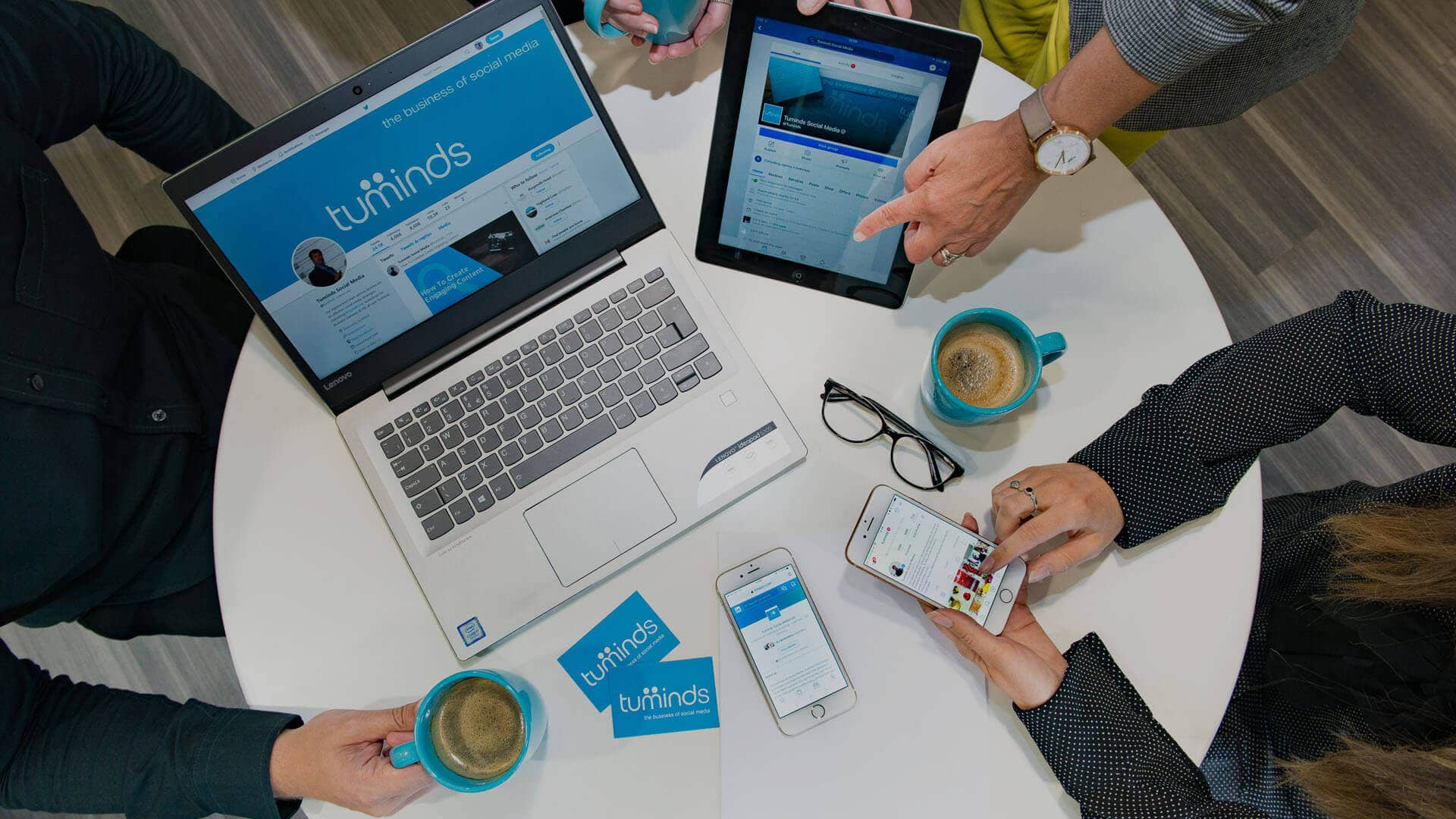Each year Social Media has to evolve.
To remain relevant platforms do their best to adapt to the changes in our behaviour and the way we use and access digital content.
So what are the trends Scottish businesses should be taking into consideration when thinking about how they use Social Media Marketing in 2016?
The Big 3 Trends in Social Media for 2016
Mobile – it’s still on the rise and not to be ignored
The “mobile shift is one of the most significant marketing trends of the last century”.
In the last year smartphone usage in the UK has continued to rise, with two-thirds of all adults owning a smartphone to browse and search the internet, use social media, do their banking and online shopping. This is up from 39% of adults owning a smartphone in 2012, and this doesn’t just pertain to millennials, usage amongst 50 to 65 year olds has increased from 19% in 2012 to 50% today.
Even in our own work here at Tuminds we can see from Google Analytics that websites are being accessed more and more via smartphones. Mobile browsing changes the way our customers and audiences now engage with digital content, and no longer can businesses ignore mobile optimisation if they want to remain competitive.
If we want to tap into the growing mobile market, then we have to consider the user experience we are offering our customers. A poor mobile experience will not result in conversions, and as more and more people are dropping the desktop experience for mobile, you could be missing out on sales by being mobile un-friendly.
This has been backed up by research conducted by Ofcom in 2015, which found that mobile search in the UK has exceeded desktop searching, that we spend twice as long on the internet when using a smartphone compared to a laptop or desktop, and nearly all people access their social media via mobile now.
Mobile technology such as digital cameras and 4G have radically transformed how we create and consume digital content. In 2015 we took 1.2 billion selfies in the UK alone, 55% of people who have access to 4G will shop online compared to 35% of non 4G users, and live television watching is being superseded by on demand and catch up TV online, accessed increasingly on a mobile device.
Sharon White, Ofcom Chief Executive, said that this “report shows just how important reliable, fast internet access is to millions of consumers and businesses. Improving the coverage and quality of all communications services across the UK is a priority for Ofcom, for people at work, home or on the move.”
With all this in mind it’s time to really think about how well your business is represented on mobile.
Video takes front stage
On the whole most people prefer visual content to text posts, on average an adult watches 66 minutes of online video a day. With faster connections and improved quality of technology to produce and view video content, video is taking front stage for consumers.
YouTube was the largest video sharing platform in the world, at one point becoming second to Google as a search engine. However, in 2015 people watched more minutes of video on Facebook, around 8 billion minutes of video are viewed every day, so much so that we can expect to see some form of “Suggested Video” feature or a dedicated video newsfeed on this social networking site sometime in 2016.
The growth of Snapchat also confirms the rise of video content in 2015, with 6 billion daily video views amongst a mainly millennial based audience. In fact, over a third of snapchat users are aged 16 to 24 years, so if your market is the youth market, then Snapchat is something to seriously consider as part of your social media strategy in 2016.
On average video produces 62% more engagement than photos and the number of videos shared by users has increased by 43% in 2015. With organic reach on the wane, across Facebook and soon Twitter, encouraging more engagement and the sharing of your content will become critical to the success of your social media strategy.
One of the perceived barriers businesses feel in regards to producing video content is expense. It is costly to produce professional and quality video, on the face of it. But with a good quality smartphone and apps such as Periscope and Meerkat, any business can start to live stream at very little expense at all. Plus, there are fantastic video producers for competitive prices on People Per Hour, for £60 you could have a professionally produced animation to promote your business by the end of the day if you were so inclined.
From a really local perspective there is also DP Digital Media, who’s newsroom video platform gives businesses an opportunity to create professionally produced video news items to promote themselves, events and news pieces to a local and global audience.
Don’t Ignore Social Advertising
Social Media platforms are going much the same way as the print media in terms of advertising, with some key differences, but the ultimate reason for this is that social media sites need to make money to sustain themselves while continuing to offer access to the sites for free to the end user. The business of social media has evolved, and with companies like Facebook and Twitter operating on the stock market, they now have shareholders and investors to keep happy, and for them the bottom line will always be profit.
So as such social advertising is the revenue stream of choice for social media platforms. It’s estimated that businesses around the world will spend in the region of $24 billion on social ads in 2016, and this is expected to continue to rise into the future.
Unfortunately, as social media platforms try to raise money through advertising, they set in place algorithms that will reduce the amount of organic reach our pages have. It’s estimated that an organic post (i.e. one you have not paid to boost or promote) will only reach 10% of your follower base. Therefore, social advertising will have to become crucial to the social media strategies for all businesses in 2016.
But with this change comes big opportunities. To ensure that your advertising spend is value for money, sites such as Facebook, Instagram and Twitter have been refining their targeting features, to ensure your ad reaches the right people with greater precision.
This is where understanding who your social media target markets are will be critical. Pinpointing who to target with advertising, understanding what their interests are, and tailoring messages that feel natural, rather than pushy advertising, is going to gain traction faster and more effectively. Coupled with the rise in engagement with video, video advertising will also be something to consider in 2016.
The other upside to social advertising is that you don’t have to spend a huge amount of money to run successful adverts. No longer is advertising the domain of the high priced media buyer, it allows businesses of all sizes in all locations to create adverts that reach their markets at a fraction of the cost of traditional advertising.
There is no doubt that as social advertising takes off, that prices will increase, however there is no immediate sign that these prices will jump to the level of print advertising any time soon. Ultimately we will have to pay for visibility, which makes it even more imperative to have a social media strategy in place as soon as possible.
For more 2016 Social Media Trends to consider read Part 2.





One comment on “Social Media Trends for 2016 Part 1”